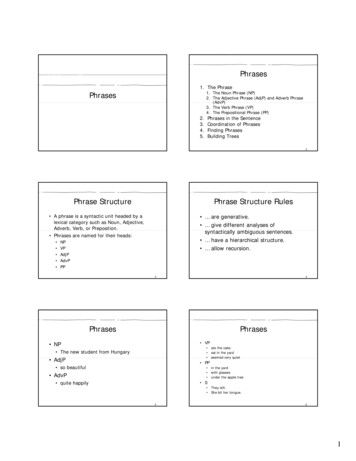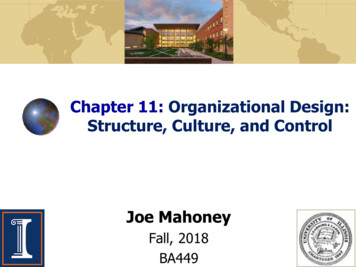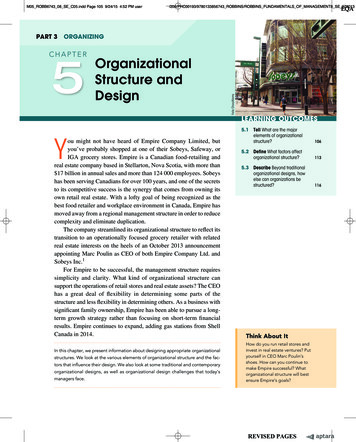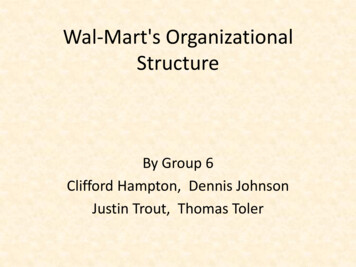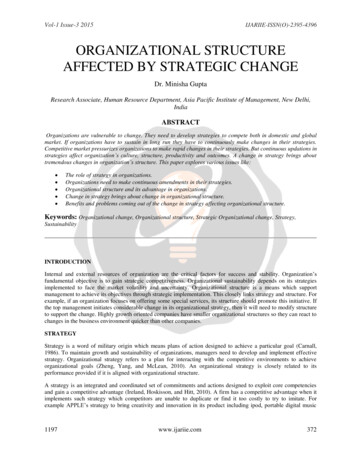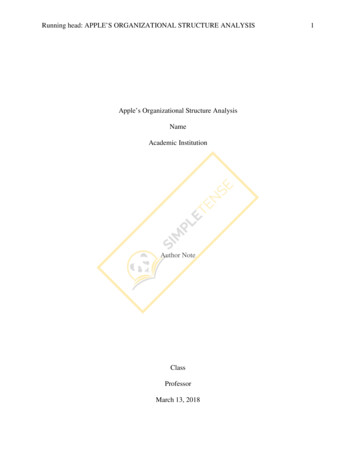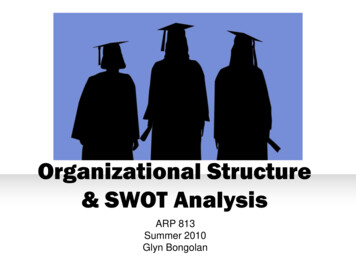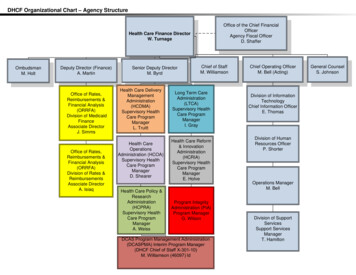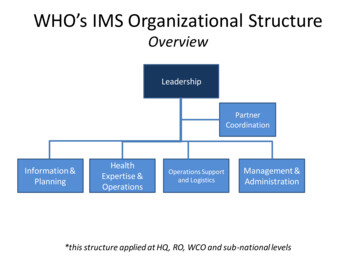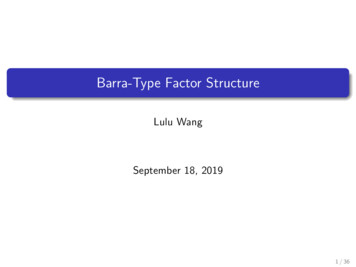
Transcription
Continue
What type of organizational structure does walmart haveWalmart as a company was founded in the year 1962 by Sam Walton in Rogers, A.R. with the motto We save people money so they can live better. The company is a U.S. international and has its headquarters based at Bentonville, Arkansas. It also has a chain of departmental stores, grocery stores along with hypermarkets. The stores of the company also have their own Sam'sClub warehouses. The status of the company's foundation can be judged with the fact that more than eleven thousand Walmart stores operated in about 27 countries of the world with different names. The stores can be seen running with the names Walmart in Canada and America, Asda in the US, while it is known by the name of the best price in India. Furthermore, the mainproducts of the company include all kinds of groceries, pharmacy products, optical centers, mobile phone stores, as well as fast food products. In addition, it also plans to open gasoline stations at some of its business locations in the world. This article is about Walmart organizational chart, which helps collect the useful information about the organization and its overall structure.Based on previous information about the organizational structure, hierarchy analysis of the organization was also expanded in the article. Walmart's overall organizational structure was clearly expanded in the article in the form of diagram. Walmart organizational structure and chart: Currently, Dough McMillian is the president and CEO of the company. His leadership has beenknown to progressively benefit the company. It is under his guidance that the company has climbed up the wall of success (ORG, 2019). The company therefore has a formal and bureaucratic structure where the CEO makes all the significant decisions for the company. Furthermore, the business structure of the company is divided into three significant divisions such as Logistics,Real Estate and Store Operations. All these sectors are headed by different leaders. A standard process of functional departmentalisation of business areas in different locations is done. This leaves a clear top to bottom flow of commands among several departments. Furthermore, the CEO of the company is a significant position responsible for taking many initiatives. It is furtherdirected to improve customer services by trained employees. The organization follows a management-style model, which embraces the business strategy based on the principles of Sam Walton. In this particular strategy, company chief executives are responsible for maintaining a good relationship with the customers. As already discussed, there are three significant divisions ofWalmart, and all of these divisions have separate drivers (Panmore Institute, 2019). The given figure shows the organizational chart of Walmart. It showcases the president and CEO of Walmart Store, that is McMillon as the most essential staff of the who has the authority to implement policies and make decisions (Cliffordmichealhampton.weebly, 2019). Moreover, among the threesignificant divisions, the first one is Walmart USA It's president and CEO is John Furner. He possesses the responsibility of managing all the operations of Walmart stores in the country. He also ensures that relationships with clients are maintained at all levels. Moving on, the second among the three is Walmart International, whose president and CEO is Judith McKenna. He isresponsible for maintaining all the shops outside the country (ORG, 2019). Then comes Kathryn McLay who is president and CEO of the third division, i.e. Sam's club. He is responsible for maintaining the warehouses in different locations. He also works for the better and timely supply of products to all Walmart stores for achieving high customer satisfaction. In addition to theexecutives of these three major divisions, there's Marc Lore who is the president, as well as CEO of Walmart eCommerce and technology in the U.S. Thus, these members of four divisions come under the direct authority of Dough McMillon and are accountable to him for all their tasks. Walmart hierarchy analysis: As the above chart shows, there's a hierarchical structure followedin the organization where the CEO of Walmart Stores has all the power in his hands. Furthermore, this structure is also function-based. The hierarchical feature shows that there is a vertical chain of command or authority practiced across the organizational structure. It's truly clear that all departments have a CEO, who is in the leading position. He is the one who directs thesubordinates under him who control the performance of further employees. To put simple words, it is the senior management of the company, which makes the necessary decisions and implements the same to the lower levels using middle managers (Panmore Institute, 2019). Furthermore, walmart's functional characteristic represents that the employees are divided at lowerlevels into groups regarding the functions performed by them. To illustrate further, there are functional departments of human resource management at various divisions, finance departments, IT department and marketing departments at different divisions. In addition, the main feature of this hierarchical structure is that managers withhold the prime responsibility of operating all thefunctions effectively. For example, when top management frames a new policy, it is passed on to different regional managers and then to the store managers. This structure ensures effective control over various functions. However, this type of structure is not flexible, and there is a lengthy communication procedure that further contributes to the difficulty level. The above figureshows up the organizational hierarchy structure of Walmart shop level. It depicts that store managers are the main members among whom there are common general and co-drivers on the second level. Furthermore, on the third level, there are support managers, customer supervisors, cashiers at stores, sales help etc. These are hourly working employees at multiple stores.Moreover, this structure stands in favor of the organization because of its massive size and business diversifications in several countries. The company has more than 2.2 million people working at its various stores. This is why the hierarchical structure is the most suitable working structure for it (Dudovskiy, 2019). So, in a nutshell, it could be said, that the CEO of Walmart stores isat the top authority among whom there are presidents of other chief three divisions. There is also a list of other CEOs such as CFO, COO CCO, a general counsel who comes under him (THE ORG, 2019). This structure is then followed by the board, which is ten in numbers and it is responsible to make any decision related to the company. The importance of organizationalstructure is such that organizations around the world make sure they follow some kind of organizational structure. Organization structure helps the companies break barriers and take organizational growth to a new level. This is possible only if the structure is correct, since improper structuring can lead to failures. Furthermore, as a student, you get several relative collegeassignments. To bait these commands, sometimes you have to depend on someone. That someone could be us, in case of online assignment help like us at Assignmenthelp4me, provides the best assignment assistance to the students around the world. We are committed to your needs as our customers. References: Dudovskiy, J. (2019). Walmart Leadership and WalmartOrganizational Structure - Research-Methodology. Retrieved 31 December 2019, from Panmore Institute. (2019). Walmart: Organizational Structure & Organizational Culture - Panmore Institute. Retrieved 31 december 2019, ORG. (2019). Walmart - Org chart The Org. Retrieved December 31, 2019, from Cliffordmichealhampton.weebly. (2019). Retrieved 31 December 2019,from Article By: David Richard With a Master's degree in Technology Management from the University of Illinois, David Richard works as a management faculty in the University of Toronto. Being a tech freak, he doesn't like being shaken, so he keeps experimenting new ideol Add a link to this page on your website: <a href amp;gt; Walmart organizational </a> structure andchart Algorithms Illuminate Part 3: Greedy Algorithms and Dynamic Programming Tim Roughgarden c 2019 by Roughgarden All rights reserved. No portion of book can be reproduced in any form without permission from the publisher, except as permitted by US copyright law. First Edition Coverage Image: Untitled, by Johanna Dickson ISBN: 978-0-9992829-4-6 (Paperback) ISBN:978-0-9992829-5-3 (ebook) Library of Congressional Control Number: 2017914282 Soundlikeyourself Publishing, LLC New York, NY [email protected] www.algorithmsilluminated.org In Memory of Stephen H. Schneider Content Foreword Vii 13 Introduction to Greedy Algorithms 13.1 The Greedy Algorithm Design Paradigm 13.2 A Scheduling Problem 13.3 Developing a greedyalgorithm 13.4 Evidence of correctness problems 1 1 4 6 12 21 14 Huffman Codes 14.1 Codes 14.2 Codes as Trees 14.3 Huffman's Greedy Algorithm * 14.4 Proof of Correctness Problems 23 23 28 32 41 49 15 Minimum Stretch trees 15.1 Problem Definition 15.2 Prim's Algorithm * 15.3 Speed up Prim's Algorithm via Hope * 15.4 Prim's Algorithm: Proof of Correctness 15.5 CrudeAl Kruskal's Algorithm via Union-Find * 15.7 Kruskal's Algorithm: Proof of Correctness 15.8 Application: Single Link Clustering Problems 52 52 57 62 69 76 81 91 94 99 16 Introduction to Dynamic Programming 16.1 The weighted independent set problem 16.2 A Linear-Time Algorithm for WIS in Paths v 103 104 108 vi Content 16.3 A Reconstruction Algorithm 16.4 The principles ofdynamic programming 16.5 The Backpack problem problems 116 118 123 133 17 Advanced Dynamic Programming 17.1 Sequence Alignment * 17.2 Optimal Binary Search Problems Trees 137 137 148 163 18 Shortest roads revisited 18.1 Shortest roads with negative edge lengths 18.2 The Bellman-Ford Algorithm 18.3 The All-Pairs Shortest Road Problem 18.4 The FloydWarshall Algorithm Problems 167 167 172 185 187 198 Epilogue: A field guide to Algorithm Design 201 Tips and Solutions for Selected Problems 203 Index 211 Foreword This book is the third of a four-part series based on my online algorithms courses that have run regularly since 2012, which in turn is based on an undergraduate course I've taught many times at StanfordUniversity. The first two parts of the series are not strictly prerequisites for this one, though portions of this book accept at least a vague reminder of large-O-notation (covered in Chapter 2 of Part 1 or Appendix C of Part 2), divide-and-conquering algorithms (Chapter 3 of Part 1), and graphs (Chapter 7 of Part 2). What will cover our algorithms illuminated, Part 3 provides anintroduction to and numerous case studies of two fundamental algorithm design paradigms. Greedy algorithms and applications. Greedy algorithms solve problems by making a series of myopic and irrevocable decisions. For many problems, they are easy to devise and often blazing quickly. Most greedy algorithms are not guaranteed to be correct, but we will cover several killerapplications that are exceptions to this rule. Examples include scheduling problems, compression and minimum stretching of trees from graphs. Dynamic programming and applications. Apps. benefits of a serious study of algorithms rival the empowerment that comes from mastering dynamic programming. This design paradigm takes a lot of practice to be perfect, but it hasnumerous applications to problems that seem insoluble using any simpler method. Our dynamic programming boot camp will double as a tour of some of the paradigm's killer applications, including the backpack problem, the Needleman-Wunsch genome sequence alignment algorithm, Knuth's algorithm for optivii viii Preface crazy binary looking trees, and the Bellman-Ford andFloyd-Warshall shortest road algorithms. For a more detailed look at the contents of the book, check out the Upshot sections that conclude each chapter and highlight the key points. The Field Guide to Algorithm Design on page 201 provides a bird-eyed view of how greedy algorithms and dynamic programming fit into the larger algorithmic picture. The stellar sections of the bookare the most advanced. The time-limited reader can skip these sections on a first reading without any loss of continuity. Topics covered in the other three parts. Algorithms Illuminate, Part 1 covers asymptotic notation (big-O notation and its close cousins), split-and-conquering algorithms and the master method, random QuickSort and its analysis, and linear-time selectionalgorithms. Part 2 covers data structures (pile, balanced search trees, hash tables, flower filters), graph primaries (width- and depth-first search, connectivity, shortest paths), and their applications (ranging from deduplication to social network analysis). Part 4 is about N P completeness, what it means for the algorithm designer, and strategies for dealing with computationalintractable problems, including analyzing heuristic and local search. Skills You will learn mastery algorithms take time and effort. Why bother? Become a better programmer. You will learn several burning fast subroutines for processing data as well as various useful data structures for organizing data that you can deploy directly into your own applications. Implementing and usingthese algorithms will stretch and improve your programming skills. You'll also learn common algorithm design paradigms that are relevant to many different issues across different domains, as well as tools to predict the performance of such algorithms. These algorithmic design patterns can help you come up with new algorithms for problems that arise in your own work. Hone youranalytical skills. You will describe and reason a lot of practice about algorithms. Through mathemati
Walmart organizational structure and chart: Currently, Dough McMillian is the president and CEO of the company. His leadership has been known to progressively benefit the company. It is under his guidance that the company has climbed up the wall of success (ORG, 2019). The company therefore has a formal and bureaucratic structure where the CEO makes all the significant decisions for the .
